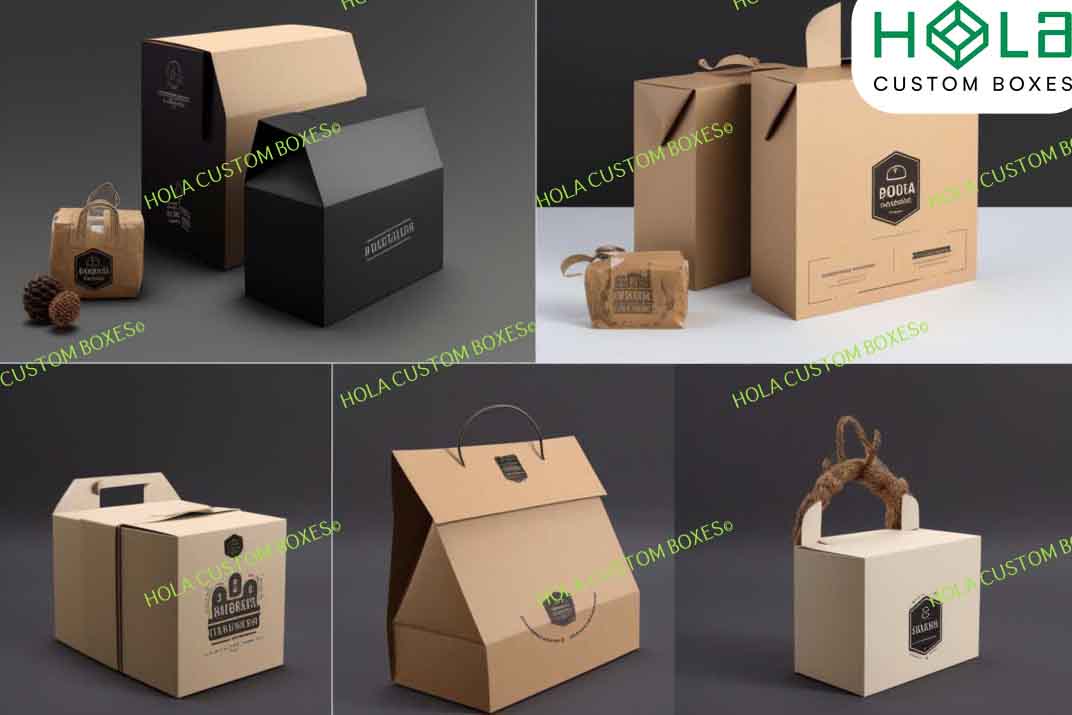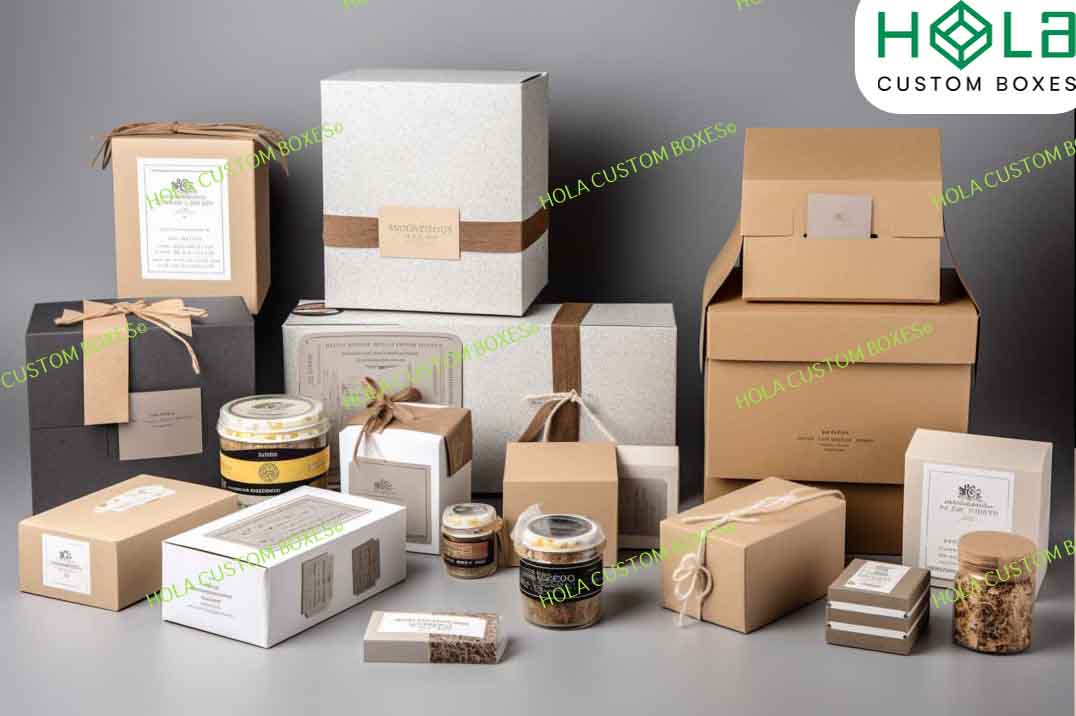Comparing The Costs Of Different Custom Packaging Printing Services
2025-12-05 17:01:50
Comparing The Costs Of Different Custom Packaging Printing Services
Custom packaging printing services allow businesses to create a custom look for their products. It is essential to compare the costs of these services to ensure that your business will receive quality materials at an affordable price. This article provides an overview of the various custom packaging printing service types and their impact on costs.
The purpose of this article is two-fold: first, it aims to identify the various types of custom packaging printing services, and second, it seeks to determine which type offers the best value for money. By examining the available options, readers should understand which service provides the most efficient and cost-effective solution for their needs.
Digital Printing
Digital printing is a custom packaging printing that has become increasingly popular. It utilizes direct-to-garment technology, which involves applying ink directly to the fabric using an inkjet printer or a specialized press.
This method enables better control over color and resolution compared to traditional methods, such as screen printing. Digital printing also offers more flexibility when creating complex designs, with three-dimensional (3D) images being possible due to advancements in digital imaging technologies. One benefit of digital printing is its cost efficiency; since most printers can print multiple designs simultaneously, labor costs are drastically reduced compared to other custom packaging printing services.
Save more without compromising quality using our custom rigid boxes.
Additionally, this process eliminates many steps typically used in traditional methods, thereby significantly reducing production time. Furthermore, no screens need to be produced for each design, eliminating additional setup fees associated with screen printing. As a result, digital printing provides greater affordability without sacrificing quality or results. In addition to these advantages, digital printers offer numerous options for customization, allowing businesses to have complete control over their products’ appearance and messaging.
Offset Printing

Offset printing is a popular choice for custom packaging solutions due to its cost-effectiveness and versatility. An advantage of this method is that it produces high-quality, consistent results with minimal setup costs and time. It also can produce large orders in bulk economically, making it ideal for customers who require a volume of prints or any mass production process.
Offset printing is more sustainable than other printing methods, as it uses fewer resources during production. Additionally, offset printers use eco-friendly inks, which have a lower environmental impact compared to standard metallic ink options. This makes offset printing an attractive option for those seeking an environmentally conscious way to produce their custom packages without compromising image detail or quality.
Compare affordable options from our retail packaging collection.
All these benefits make offset printing one of the most affordable and reliable methods for creating customized products on a larger scale.
Flexographic Printing
Flexographic printing is a custom packaging printing that uses flexible, raised plates attached to cylinders. This method can be applied to various substrates and offers accurate registration, including intricate details and color-matching capabilities. The cost of flexographic printing depends on the project's complexity; however, it generally requires less labor than other methods, making it a more cost-effective option.
In addition to its economic benefits, flexographic printing also offers several environmental advantages. It uses non-toxic inks, either solvent-free or containing biodegradable solvents, resulting in fewer emissions into the atmosphere. Furthermore, the need for drying time between passes through the press is eliminated by its water-based ink system, resulting in quicker production times and reduced energy consumption compared to conventional methods.
Despite the positive aspects of flexographic printing, it still has drawbacks compared to other techniques, such as digital or lithographic printing. For example, since flexo presses tend to require longer setup times than their counterparts due to the amount of mechanical adjustment involved, jobs requiring multiple colors may take longer to complete. Additionally, although costs have been decreasing over time, this method is still slightly more expensive than others for short-run projects due to higher material costs per print unit.
Choose eco-conscious solutions through eco-friendly packaging boxes.
Overall, then, flexographic printing is an affordable and efficient method for businesses seeking high-quality printed materials at low volume levels, while also considering sustainability concerns related to labor costs and environmental impact.
Screen Printing

Flexographic printing is a popular method for custom packaging. However, screen printing can also be an efficient and cost-effective solution. A great example occurred when The Home Depot needed to produce thousands of plastic pots in a very short turnaround time. They chose screen printing as the most effective way to customize each pot with their logo.
Screen printing offers several advantages over other types of custom packaging printing:
- Faster production speed than flexo or digital printing
- Options for multiple colors
- Ability to print on almost any material
- Longer lifespan since the ink is cured into the material
In addition to these benefits, it's essential to consider shipping costs and finishing options when choosing between flexo and screen printing. Screen-printed packages tend to have more durable finishes due to their curing process, which increases longevity but may add additional shipping weight. Finishing options such as varnishes or laminates are often available through both methods but require careful consideration of budget constraints.
Ultimately, flexo and screen printing offer solutions that deliver high-quality finished products at competitive prices; therefore, the best choice depends on individual needs and requirements.
Hola Custom Boxes ensures transparent pricing and premium materials for every project.
Inkjet Printing
Inkjet printing is a popular choice when considering custom packaging solutions. This printing method uses liquid ink sprayed directly onto the medium, enabling high-quality prints with vibrant colors and fine detail from digital designs. Inkjet also offers versatility in media compatibility, including paper, plastic, metal, and fabric.
As with other methods of custom packaging printing, there are advantages and disadvantages to using inkjet technology. One advantage is the low environmental impact compared to traditional offset lithography or flexographic printing processes, which use chemicals and solvents for plate production or color mixing. Additionally, the cost per unit can be lower than that of offset lithography when large volumes are printed.
However, inkjet printers may require frequent maintenance due to clogged nozzles caused by dust particles in the air or dried-out ink residue on the printer's rollers. Furthermore, while it produces high-quality results on common substrates like paper and cardboard stock – often better than laser toner-based machines – its performance degrades when used with specialized materials, such as metalized film (for holograms), shrink-wrap labels on curved bottles, and so forth.
The decision to use inkjet printing should consider these factors before purchasing custom packaging services. A thorough evaluation process comparing costs versus desired outcomes should be made to ensure optimal results at an acceptable price point.
Thermal Printing

Thermal printing is a custom packaging process that utilizes thermal bonding and an image-based transfer system. It works by heating a special wax, which melts onto the paper below. The heat applied to this molten wax produces an image in its wake. This process has been used for decades due to its high thermal conductivity, making it very reliable when transferring images from one place to another.
The advantages of using thermal printing technology are numerous:
- Cost efficiency – Thermal printing requires minimal investment in time and resources compared with other methods, such as offset or digital printing.
- Low energy consumption – Since the melting process does not require additional power sources, energy consumption is minimized.
- Quality control – Due to the precision required to create a single melted layer, results are consistent between prints.
- Fast production times – Studies have shown that products produced by thermal printing can be completed up to 3 times faster than those produced by traditional offset processes.
In addition, several types of materials are suitable for thermal printers, including Polyethylene Terephthalate (PET) films and papers coated with Acrylics or Cyanate materials for superior print quality and durability. Furthermore, certain thermally printed items may be further treated through lamination or gloss coating to increase their longevity and aesthetic appeal.
As a result, many businesses today rely on thermal printing technology for their custom packaging needs due to its cost-effectiveness, low environmental impact, accuracy, and high operational speed. With these benefits combined into a single package, it is no wonder this method remains popular among entrepreneurs seeking efficient solutions for their business needs.
Engraving And Embossing
While thermal printing offers a traditional, affordable solution for custom packaging printing services, engraving and embossing create an eye-catching look that draws attention to your product. Both techniques employ the same basic principle of cutting into the surface material, but differ in their execution - laser cutting and 3D printing being two popular methods. Engraving involves creating grooves on the surface, while embossing raises images above it; both can be used simultaneously to create intricate patterns and designs.
Speed is key when using these techniques on lighter materials such as paper or cardstock. Laser cutters provide a fast way to accurately produce large volumes of work quickly, as well as provide precision detail which is impossible to achieve by hand. 3D printing ensures accurate replication of designs without sacrificing quality or durability in heavier materials such as metal or plastic.
The result of engraving and embossing adds dimension to any custom packaging project, creating a lasting impression on those who view it. Additionally, when combined with other finishing options, such as foil stamping or die cutting, you can further enhance your product's design. And because there’s no limit on complexity and intricacy with either technique, you can tailor them perfectly for any business or occasion – from corporate branding projects to luxury special events gifts.

No matter what type of effect you’re looking for in your custom packaging print job – whether subtle yet impactful details or bold features – engraving and embossing offer a unique touch that will set your products apart from the competition. With so many customization options available through this creative process, you can rest assured that each piece will turn out exactly how you imagined it—and possibly even better!
Conclusion
Custom packaging printing is a highly specialized field, and the costs associated with each method can vary significantly. It is essential to consider factors such as durability, quality, turnaround time, and whether or not special effects are desired when selecting a method for your project. Ultimately, it boils down to finding the right balance between cost and performance that works best for your business.
In conclusion, while affordability should be considered when evaluating custom packaging printing options, there is no one-size-fits-all solution; what may work well in one situation could be an expensive mistake in another. Aspiring entrepreneurs must remember this to avoid squandering their hard-earned resources on subpar solutions. With careful consideration and research into techniques such as digital printing, flexographic printing, and engraving & embossing, businesses can create captivating packages without breaking the bank.
Get top-quality packaging at the right price — compare and order from Hola Custom Boxes for unbeatable value and service!
FAQs:
- How are custom packaging costs calculated?
They depend on material, size, print options, and the quantity of orders. - Can I get a quote before finalizing the design?
Yes, we provide free detailed quotes with no hidden fees. - Does printing quality affect pricing?
Higher-quality finishes, such as foil or UV, slightly increase the cost but add a premium appeal. - Is bulk ordering cheaper?
Absolutely — the per-unit cost decreases significantly as quantities increase. - Do you offer price matching?
Yes, we’ll match or beat verified competitor pricing for similar specs.
